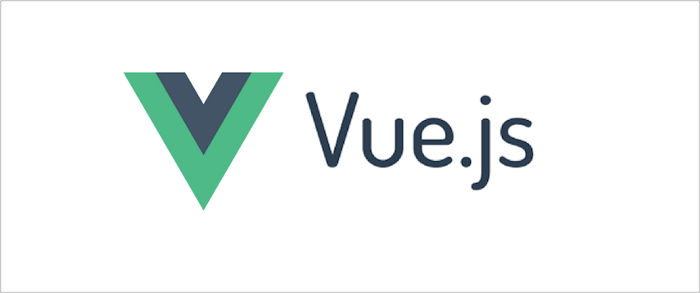- Fork and clone
npm install- Create a
.envin the root directory of this project
In this lesson, we'll learn how to interact with RESTful API's utilizing VueJS. We'll be utilizing the Open Weather Map API to build a small weather application. Like most other frameworks and libraries, Vue has a component lifecycle that allows us to control what happens when a component is rendered, updated, and removed from the DOM tree. We'll utilize these component lifecycle methods to trigger a request to retrieve weather data. We'll also be utilizing the browser's native Geolocation API to retrieve a user's location in order to send our API requests.
Start by heading over to Open Weather to sign up for an account. Once you've signed up, you can head here to view your API key.
Take your API key and add it to the .env file you created earlier with a variable of VUE_APP_WEATHER_KEY.
Remember, anytime you make a change to a .env file, you must restart your server (npm run serve)
VueJS provides us with a few component lifecycle methods that are also known as hooks:
- mounted
- created
- updated
and more...
We'll include a full list with each hook's description in the Resources section down below.
Each method has it's own responsibility in a component's lifecycle. Today, we'll be using mounted to trigger our API calls.
mounted is a hook that is triggered when a component gets loaded onto the DOM tree. This is one of the hooks that runs right when our component loads, which makes it a great candidate to trigger an API call.
Let's start by creating a few pieces of state in our App.vue. We'll create:
dailyWeather: [],currentWeather: null
Next, we'll set up a method called getCurrentWeather that accepts a parameter of coords. This method should be async.
methods :{
async getCurrentWeather(coords){}
}Now we'll import axios at the top of our script section and create a variable to access our API key:
Note: Axios is already installed for you.
import axios from 'axios'
const API_KEY = process.env.VUE_APP_WEATHER_KEYInside of our getCurrentWeather method, we'll set up a GET request to the following endpoint:
https://api.openweathermap.org/data/2.5/onecall?lat=${coords.latitude}&lon=${coords.longitude}&units=imperial&appid=${API_KEY}
Note: Make sure to utilize backticks (`) when inputting this URL
We'll plug in a few query parameters into this URL using the template literal syntax:
const res = await axios.get(
`https://api.openweathermap.org/data/2.5/onecall?lat=${coords.latitude}&lon=${coords.longitude}&units=imperial&appid=${API_KEY}`
)Finally, we'll set the current property from the response to the currentWeather state:
this.currentWeather = res.data.currentMost browsers come with a GeoLocation API built in. Today, we're going to leverage that to help us get the weather in our specific location.
Start by adding mounted(){} below your data:
mounted: function(){},The mounted method will fire once the component gets mounted onto the DOM tree. This is a perfect candidate to trigger a location request from our user!
Inside of the mounted function, we'll add the following:
navigator.geolocation.getCurrentPosition()The getCurrentPosition function accepts 1 argument which will be a callback function. One slight change however, we're going to be invoking our getCurrentWeather function from earlier in this callback, which means it needs to be async. Let's add this callback:
navigator.geolocation.getCurrentPosition(async () => {})The callback function accepts 1 argument which is an object containing some really neat location data. We're interested in the coords property which contains the user's longitude and latitude.
Let's accept an argument of positon in our callback and pass in position.coords to our getCurrentWeather function:
navigator.geolocation.getCurrentPosition(async position => {
await this.getCurrentWeather(position.coords)
})Let's check our devtools to ensure the data was set correctly:
Now that our weather data is set to state, we can provide it to a component that has been built for you already.
Let's import the WeatherDash component from the components folder:
import WeatherDash from './components/WeatherDash.vue'Once you've imported the component, list it in the App components object:
components: {
WeatherDash,
},And finally, we'll utilize the WeatherDash component and provide the currentWeather state as props along with a v-if directive to check for this data:
<WeatherDash v-if="currentWeather" :currentWeather="currentWeather" />After adding the WeatherDash component, add the following jsx to display something if our API call fails:
<div v-else>
<h3>No Weather</h3>
</div>You should now see the following in your Vue app:
Your task is to display the weekly forecast using the remaining API data in the response. Your final application should look as close as possible to the following:
Requirements:
- Must display the day
- Must display the date in the following format
Sep 21(Make sure this reflects the correct dates provided by thedtproperty in each object) - Must display the correct icon (you can use
WeatherDashas a reference)
Hints:
- The datetime is displayed as
UNIXtimestamps, simply passing these to the date object will not work. However, if you multiply these numbers by1000, it will give you a realistic time. - The
Dateconstructor may be very useful. Here are a couple of links that may help complete this task: - Using two individual methods for the day and date will help keep logic much easier to manage.
- The API docs give you a description of each property in the response which you can find here. You're looking for the
dailydata.
In this lesson, we learned how to use Vue's lifecycle hooks to trigger API requests. We also utilized the browser's native geolocation features to read a user's current location. Vue has tons of helpful and useful lifecycle hooks for any situation you may come across. Many frameworks and libraries follow very similar flows when it comes to working with external data and makes picking up new technology easy for developers.


.jpg)


